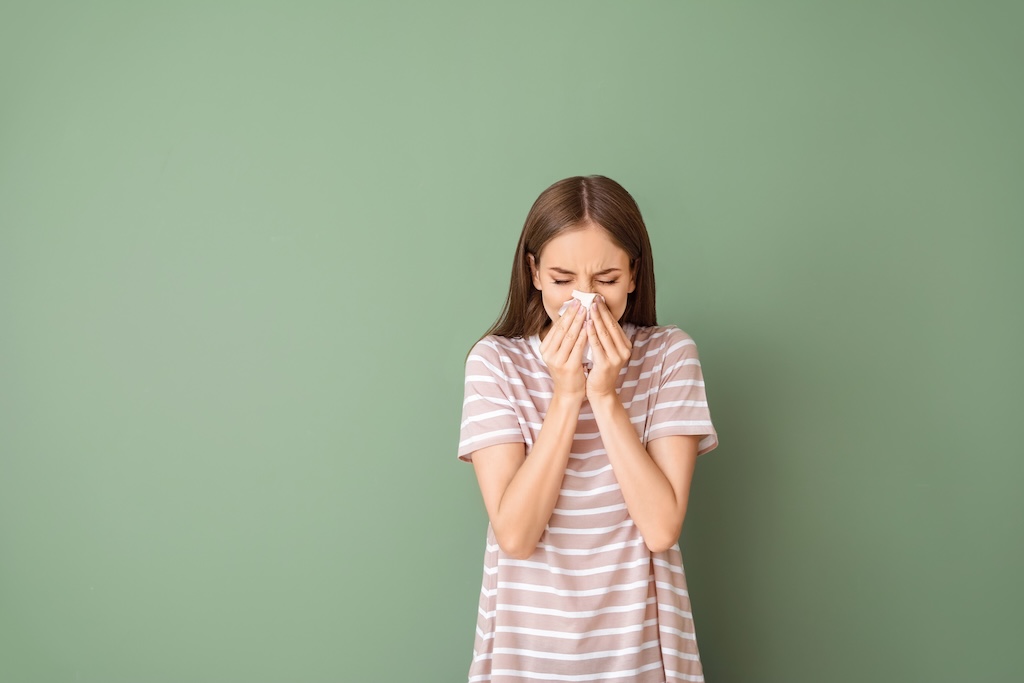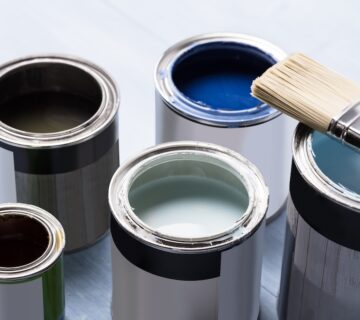Painting your home can be an exciting project, but for some, it can also bring about concerns of allergies and health reactions. Paint-related allergies can stem from the chemicals found in paint, such as volatile organic compounds (VOCs), preservatives, and other additives. Understanding how to recognize and prevent these allergies is important for ensuring a safe and comfortable painting experience. Being aware of the potential hazards and knowing how to mitigate them can help make your painting project a success. This blog explores the signs of paint-related allergies and offers practical tips for prevention, ensuring that your home improvement efforts are both satisfying and health-conscious.
Identifying Paint-Related Allergies
The symptoms of paint-related allergies can vary from mild to severe and may include skin irritation, redness, itching, respiratory issues, headaches, dizziness, and in severe cases, asthma-like symptoms. These reactions can be immediate or develop over time with prolonged exposure. It’s important to note that these symptoms can also be attributed to other factors, so consulting a healthcare professional is recommended for a proper diagnosis. Recognizing these signs early can help you take quick action to alleviate symptoms and prevent further exposure. Awareness and timely intervention can significantly improve comfort and health outcomes during painting projects.
Choosing the Right Paint
Low-VOC and No-VOC Paints
These paints have reduced levels of volatile organic compounds, making them a safer choice for people with sensitivities or allergies. They emit fewer fumes and odors compared to traditional paints. The lower chemical content helps minimize the risk of respiratory problems and skin irritation, making these paints a preferred choice for health-conscious consumers. Additionally, they are better for the environment, contributing to a healthier planet as well as a healthier home. Opting for these paints can be particularly beneficial in enclosed spaces where ventilation might be limited.
Natural or Organic Paints
Natural paints are made from ingredients like plant dyes, water, essential oils, and natural latex. They are generally free from synthetic chemicals and can be a good option for those with allergies. However, it’s important to check for any natural ingredients that might also be allergens. Even natural components can trigger reactions in sensitive individuals, so thorough research and understanding of the product’s contents are crucial. These paints often also contribute to a more sustainable environment, aligning eco-friendly practices with health benefits.
Hypoallergenic Paints
Some brands offer hypoallergenic paints that are specifically formulated to minimize allergic reactions. These paints are typically free from irritants and harmful chemicals. They are designed to provide peace of mind for those particularly sensitive to environmental triggers, making painting a safer activity for everyone in the household. When choosing hypoallergenic paints, it’s important to review product labels and certifications to ensure they meet rigorous health and safety standards. This extra scrutiny can help avoid potential allergens and ensure a safer application process.
Ensuring Proper Ventilation
Regardless of the type of paint used, proper ventilation is crucial in reducing the risk of allergies. Ventilating the area well during and after painting helps to disperse fumes and reduce the concentration of airborne irritants. Open windows, use fans, and take frequent breaks to ensure you’re not constantly exposed to paint fumes. This practice not only helps in alleviating immediate symptoms but also contributes to the long-term safety of your home’s environment. Good air circulation can significantly decrease the likelihood of developing chronic symptoms related to poor air quality.
Using Protective Gear
Wearing protective gear can help minimize direct contact with paint and fumes. This includes gloves, masks, and even protective eyewear. For those particularly sensitive, wearing long sleeves and pants can prevent skin contact with paint. Ensuring that your skin and respiratory system are protected can make a substantial difference in your comfort and health while painting. Such precautions are especially important during the sanding and application phases when exposure to chemicals is highest.
Testing Before Use
If you’re concerned about a potential allergic reaction, consider doing a patch test with the paint before starting your project. Apply a small amount of paint on a hidden area and wait to see if there’s any adverse reaction. This simple preemptive step can prevent a larger, more uncomfortable reaction. Testing the paint can be particularly reassuring when trying a new brand or type of paint. It’s a prudent measure that can help ensure the chosen paint is compatible with your personal health requirements.
Preparing the Area
Preparing the area by cleaning and dusting can also reduce the risk of allergies. Dust and other particles can mix with paint, potentially leading to irritation, especially for those with respiratory sensitivities. Ensuring that the space is clean before beginning to paint helps in reducing these irritants. This includes covering furniture and floors to protect them from dust and drips, which also contributes to a cleaner painting process. A well-prepared painting environment not only facilitates easier cleanup but also ensures a healthier space during the painting process.
Final Thoughts
Recognizing and preventing paint-related allergies is essential for a safe and healthy painting experience. By choosing the right paint, ensuring proper ventilation, using protective gear, testing the paint, and preparing the area, you can significantly reduce the risk of allergic reactions. Painting your home doesn’t have to be a health hazard; with the right precautions, it can be an enjoyable and safe project. These strategies help protect your health while allowing you to beautify your home effectively. Ultimately, being well-prepared and informed can transform your painting experience from daunting to delightful. For more information on safe painting practices and allergy prevention, visit our website at sisupainting.com and check out our blog at sisupainting.com/blog.





No comment